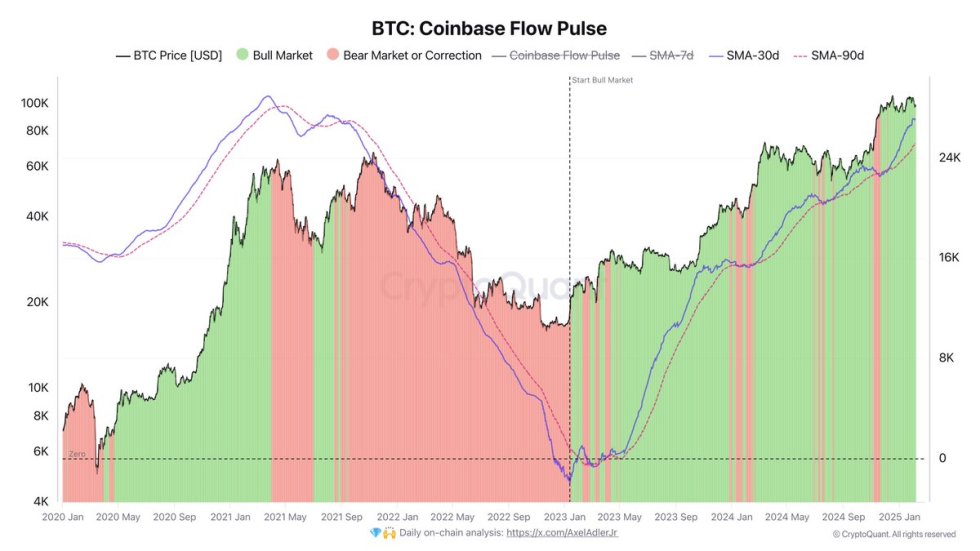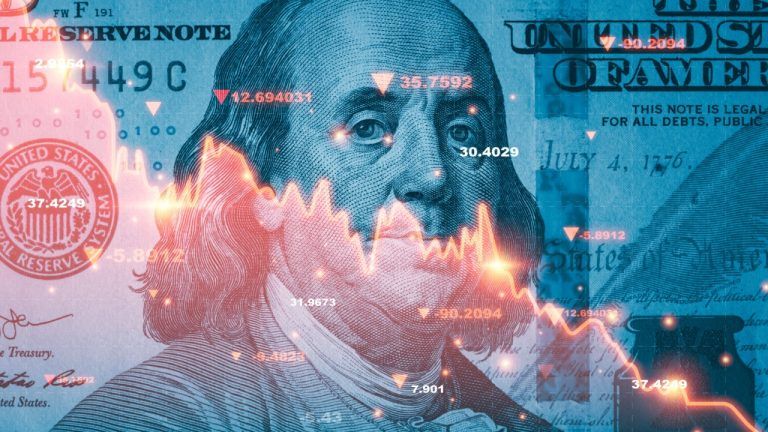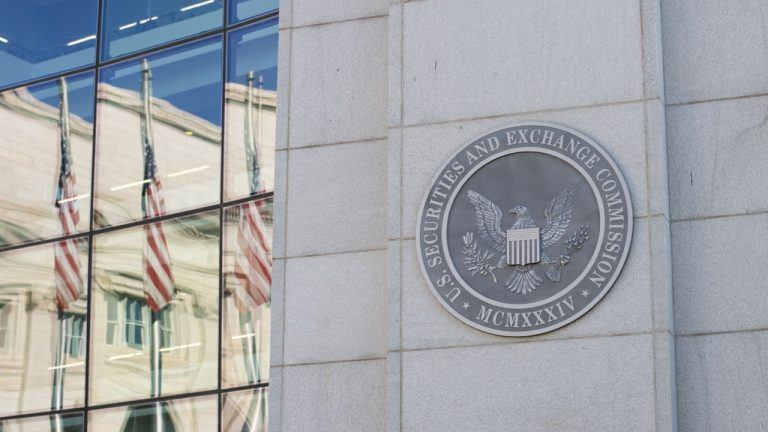
Is a bullish reversal incoming, or is crypto starting a bear market? It’s not clear where the markets will go, so let’s weigh the facts.
It has now been three months since Bitcoin’s price peaked at an all-time high just shy of $65,000. For most of the last two months, Bitcoin (BTC) has been trading in the $30,000–$40,000 range, as much as 54% lower than its peak
The downturn came at a time when many analysts were predicting exactly the opposite — a bull cycle set to run to new record highs within months — with some even speculating that a six-figure BTC price would materialize this year.
So, what’s going on? Is the current market downturn just a blip on an otherwise upward trajectory, or is the crypto market back in the kind of long-term bearish territory last seen in 2018?
Bullish metrics
Bitcoin’s historical price activity has a compelling correlation with its halving cycles, with previous all-time highs being reached within around 12 to 18 months of a halving. PlanB, the creator of the Stock-to-Flow BTC price model, is among the most vocal proponents of this. On Twitter, the analyst remains resolute that the Stock-to-Flow Cross Asset Model (S2FX) predicts further bullish action, pointing to similar temporary downturns before epic rallies in previous cycles.
So far, the S2FX model has been one of the most accurate price predictors of Bitcoin over the years. In addition, on-chain metrics appear to support the theory that bearish sentiments could be short-lived. For instance, shortly after Bitcoin’s April price peak, traders suddenly started moving funds onto exchanges, ending an almost uninterrupted eight-month run of HODLing.
Igneus Terrenus, head of communications at crypto exchange Bybit, believes that short-term traders were responsible for the sell-off following BTC’s price highs. He told Cointelegraph:
“A series of deleveraging events shook off many short-term speculators, whose capitulation accounts for the majority of realized losses in recent months. While the euphoria at the start of the year has all but dissipated, whales and long-term holders have remained confident through the market's overall bearish sentiments.”
However, over the recent weeks, trading platforms have once again seen funds flowing out. Glassnode’s Realized HODL Ratio, which tracks the willingness of investors to let go of their holdings, also appears to reflect similar patterns seen in previous cycles.

Richard Nie, chief research analyst at Bingbon, believes that the exchange flows are telling. Speaking to Cointelegraph, he concurred that the metrics indicate a bullish shift. “We ought to pay attention to the number of whale holders and the amount of BTC held by exchanges,” he said, adding that as “more BTC is withdrawn from exchanges and moved into private addresses, this is a strong bullish signal.”
Mati Greenspan, founder and CEO of Quantum Economics, told Cointelegraph: “Right now crypto volumes across exchanges are the lowest they’ve been all year. Once trading picks up again, that would be a good indication the lull is complete.”
Broader bullish indicators
Project funding is another significant indicator of market sentiment, and 2021 has been an outstanding year for crypto startups. As reported by Cointelegraph, the crypto industry saw more funding in the first quarter of 2021 than in all of 2020 put together, pulling in $2.6 billion.
The downturn since April doesn’t appear to have spoiled the appetites of venture capitalists at all. In late May, stablecoin issuer Circle raised $440 million, and only days later, Mike Novogratz’s Cryptology Asset Group announced it was launching a crypto investment fund worth $100 million.
By mid-June, Bloomberg had reported that the total venture capital investment in crypto for the year was already up to over $17 billion. Even discounting the $10 billion that Block.one directed into its new exchange venture, it’s sufficient to demonstrate that the crypto market’s second-quarter performance hasn’t yet affected the growth in venture capital investment.
There are also macro market factors to consider. Amid ongoing uncertainty surrounding the state of the global economy, some, including Robert Kiyosaki — author of Rich Dad Poor Dad — have predicted a stock market crash. In Kiyosaki’s case, he’s also been encouraging his followers to stock up on gold and Bitcoin. There are signs that Bitcoin may be becoming more correlated to stocks, but could a mass stock sell-off mean investors ultimately turn to BTC as a safe-haven asset?
A further consideration is Bitcoin's upcoming Taproot upgrade due to activate in November. It marks the first upgrade to the Bitcoin network since the Segregated Witness (SegWit) fork, which took place in August 2017. Of course, that was followed by an epic run up to a new all-time high of $20,000 in December 2017. It’s hard to know if history could repeat itself in this regard or if there’s even any direct correlation between the upgrades and the markets, but it’s worth bearing in mind.
Bears in the form of regulators
It’s beyond doubt that the biggest bearish forces shaping the markets over the last few months have been regulatory. Most notably, the Chinese government’s mining clampdown has created widespread uncertainty. Many large mining operations have been forced offline — in some cases permanently and in others temporarily as they relocated from China to new sites. This migration no doubt came at a significant expense, and in the meantime, Bitcoin’s mining difficulty has undergone its biggest drop in history, only confirming the impact that the clampdown has had on the network.
However, lawmakers from other countries have also recently started to take a closer look at crypto. India, which only relaxed its stance toward cryptocurrencies in 2020, could once again be considering a ban, although the situation continues to evolve.
The United Kingdom Financial Conduct Authority also recently launched a campaign against Binance, ordering it to stop undertaking regulated activity in the country. Now, crypto firms are withdrawing licensing applications in the U.K., while users are finding themselves locked out of the exchange by their banks.
In general, Binance has been under regulatory pressure from all over the world, for a variety of reasons. In the meantime, it’s still not clear if regulators are going after Binance specifically or if the exchange is simply seen as a representative of the rest of the crypto industry.
Related: Binance in the crosshairs: Are regulators paying attention to crypto?
Institutional analysts have also been making ominous predictions about Bitcoin’s price, with JPMorgan issuing a warning that the near-term setup for BTC continues to look unstable. While these developments aren’t likely to be as seismic as the Chinese mining ban, they haven’t helped market confidence.
Daniele Bernardi, CEO of fintech management company Diaman Group, believes that there are reasons to be cautious, telling Cointelegraph:
“If we analyze the Bitcoin price based on the S2F model, Bitcoin prices have the potential to triple in the short term. However, at Diaman, we’ve also developed a model based on the rate of adoption. Following this model, a $64k ATH is fair.”
A stronger bull case?
As it has previously been suggested that most of the signals point to this bull market only being at a halfway point, is there enough evidence to reverse that direction? All things considered — and unsurprisingly — it’s too soon to say definitively. On one side, there is regulatory tumult and a substantial decrease in trading volume, suggesting an overall lack of interest and engagement. On the other, there are some telling on-chain metrics and indicators of investor sentiment that appear to stack up in favor of a continuing bull market.
Related: GBTC unlock edges closer as impact on Bitcoin price remains unclear
However, in practice, the regulatory issues continue to spook the market, proving that price models and VC funding aren’t necessarily able to assuage concerns. If there are further major clampdowns, then it may be that the bull market cannot recover after all.
The fact that prices have held above $30,000 thus far, despite perhaps the biggest test to mining security in history, is a testament to the bullish forces at play. If the current regulatory situation starts to calm, then there’s every chance that the bullish part of the market cycle could still play out to its predicted conclusion.

You can get bonuses upto $100 FREE BONUS when you:
💰 Install these recommended apps:
💲 SocialGood - 100% Crypto Back on Everyday Shopping
💲 xPortal - The DeFi For The Next Billion
💲 CryptoTab Browser - Lightweight, fast, and ready to mine!
💰 Register on these recommended exchanges:
🟡 Binance🟡 Bitfinex🟡 Bitmart🟡 Bittrex🟡 Bitget
🟡 CoinEx🟡 Crypto.com🟡 Gate.io🟡 Huobi🟡 Kucoin.




















Comments